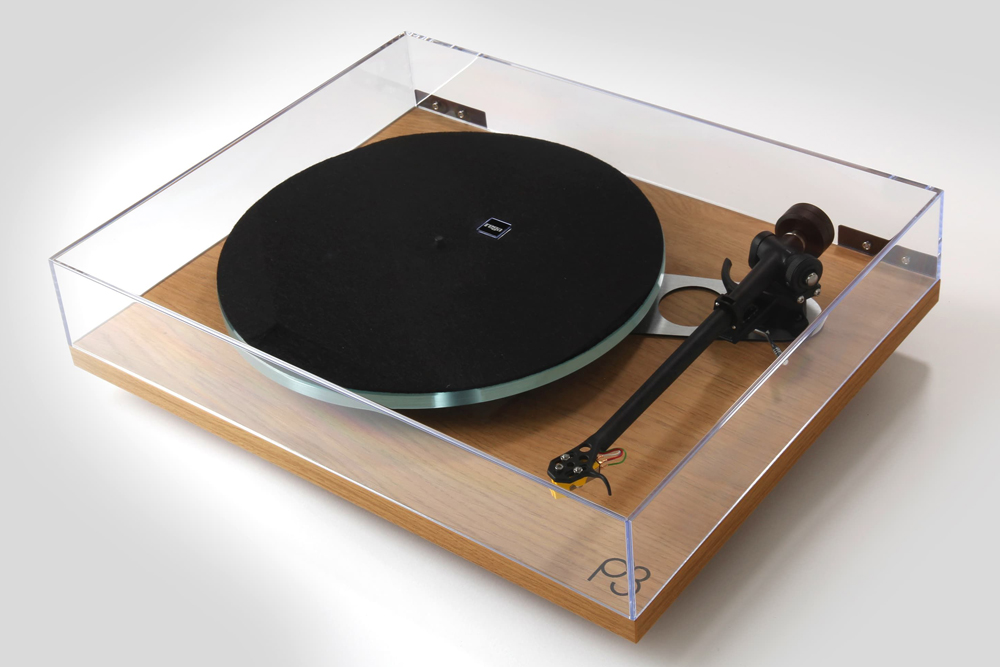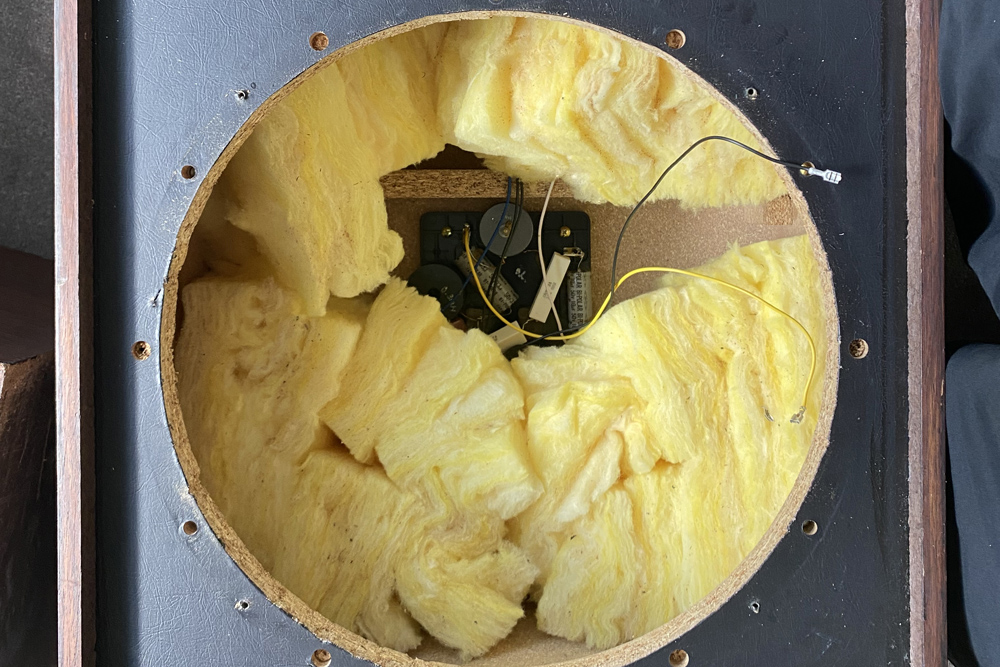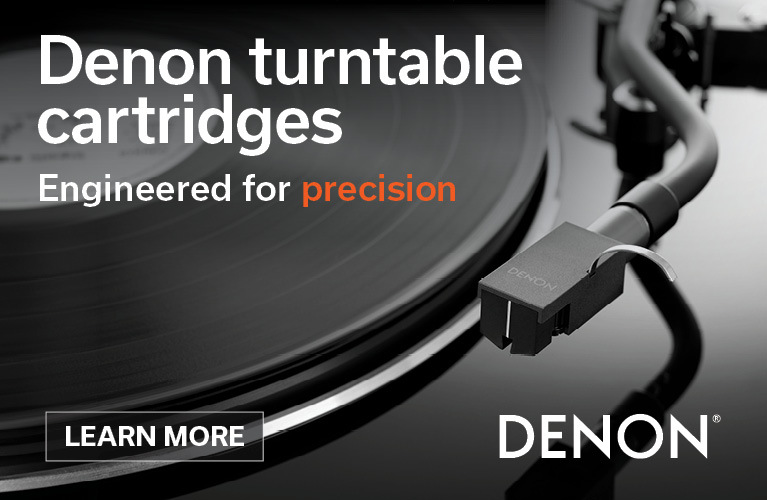I’m at a friend’s place, one evening, and after dinner we sit down to watch a few eps of the latest Trek “Strange New Worlds” when Pat points at his beloved speakers. Sadly, he tells me his wife is “making me get rid of them”. Pat’s hearing isn’t the best these days, so it kinda makes sense. It was actually through Pat that I first became interested in hi-fi, and it was Pat who gave me my first job. I used to ride my bike down to the local shopping centre after school some days to buy the latest Top 40 compilation LP record. One day, on the way out, I discovered the Tandy Electronics store (Radio Shack in the USA). Pat was the owner, and he had set up what was to me an absolute killer system. On that day, he was demonstrating it to a customer…
Speed of Sound
It was Donald Fagen’s “Ruby Baby” from his album The Nightfly spilling out into the mall. Like a moth to a flame, I detoured into the store and stood there transfixed. I had never before heard music sound that good. The speakers were the classic Tandy Mach One. In those days, my system was a 1970s vintage 3-in-1 stereo record player and AM/FM tuner with a pair of 2-way bookshelf speakers my dad had given me. That system was a left over from his electronics business in which he used to service clocks, punch-card timekeeping systems, intercoms and other telecommunication equipment of the day. At the time, I thought the sound was pretty good, as my friends only had portable radio/cassette players.
So, there I stood, in complete awe. When the demonstration was over, I asked Pat (back then, I didn’t know that was his name) if I could help out in the store – I wanted to save up enough money to buy the speakers. Pat smiled and told me I might be in luck if I was free on Saturdays.

I worked with Pat over the next year or so but learned that the fabulous speakers I heard were not going to work with my low-fi 3-in-1. So, I ended up with a cheaper but better matched pair of speakers, and eventually a new stereo amplifier and separate turntable. For anyone who remembers Tandy, my very first separates system was a pair of MC-1201 two way speakers, a LAB-290 turntable and an STA-95 receiver. Yet, my heart was still with the unforgettable Mach One.

I waited for them to come on sale (Tandy was known for having monthly sales, often at up to half price) but it didn’t happen. I later upgraded the speakers to a pair of ‘tower’ speakers (Optimus T-120) when they came on sale, and shortly after the Mach One was discontinued. It was replaced with the Mach Two, but I didn’t think they were as good as the original.
With this system I was held in high regard by some of my school friends who would come to my place after school to listen to music. My parents were kind enough to let me set up my system in the lounge room (they had a separate lounge which wasn’t used for day to day living) and this system saw me all the way through university (well, almost). In my second year of university, I discovered that the university was giving out student loans for books and to help with living expenses etc. Now working in a different Tandy store while I attended university, I met Jack, an audiophile who was unimpressed with any of the equipment we sold in the store.
I invited myself over to his place one afternoon to hear a “real system”. It comprised of a Linn LP12 turntable (complete with Ittok arm and Asaka cartridge) feeding a Perreaux SA-2 preamp and 2150B power amplifier driving a pair of Gale 402 speakers. Jack spun up “Mitsubishi Boy” from Ben Sidran’s latest LP at the time, On the Cool Side. That was another jaw-dropping experience and one which propelled me down the audiophile path.
So, I promptly signed up for the student loan and drove to Vince Ross Audio World with my friend Paul, where I bought a Rega Planar 3 turntable. I had to smuggle it into the house when mum and dad were out, setting it up in place of my old turntable… would they notice? Well, they didn’t! A few weeks later I went back to Vince Ross and bought a Rotel RC-850 preamplifier and an RB-870B stereo power amplifier and, again, I managed to get those installed while mum and dad were out.

There was a big problem this time, however… they noticed! It took a few months as I recall for my dad to calm down. One day some months later, I saw a second-hand pair of DCM Time Window speakers. I auditioned them… and knew I had to have them. These looked radically different to my tower speakers, and I knew that mum and dad were onto me now, so it took a bit of doing but eventually, I got them home and faced the music a second time. I’ve never looked back since.
Museum Piece
I have been told on occasion that my house could be mistaken for a speaker museum, which is why I did have to think twice when Pat told me he was getting rid of his beloved Mach One speakers. Those speakers I heard as a pimply faced teenager all those years ago... That second thought however, lasted only a microsecond and we eventually agreed on the price: a bottle of Maker’s Mark. Thanks Pat!
Of course, I’m not claiming that the Mach One is a serious contender in the audiophile realm. Tandy typically used cheap drivers from Japan, rather than expensive drivers from Norwegian or European manufacturers. However, the cabinetry wasn’t too bad. It was particle board with a walnut veneer finish and, in the case of the Mach One, the front baffle was lined with faux leather. There were no binding posts, but rather push button inserts for bare wire.
I’ve seen varying degrees of crossover sophistication in some Realistic and Optimus speakers (another Tandy speaker brand) and was confident that the capacitors and other componentry weren’t sought out for their sound quality. Therefore, despite having memories of how fantastic these speakers sounded on that first occasion, I knew that they would be unlikely to take up a regular position in my primary system. However, I sure was curious to hear them again to see what these 40+ years old speakers would sound like when fed from a good source and driven by a decent amplifier. Plus, there were opportunities for further improvement with digital crossover and correction via my DEQX HDP-5.
The Mach One’s employ a sectorial ‘Multicell’ horn midrange which covers a significant portion of the audio band from about 800 Hz and extending up to 5000 Hz. The high frequencies are served by a Bullet Tweeter, a type of horn tweeter with a bullet shaped dome at the centre of the horn [May be a piezo style tweeter – Editor]. Bullet tweeters, more common in pro audio, are more directional, more robust, and are known to have a more aggressive sound than the typical dome tweeter used in domestic audio speakers.


The DEQX digital processing corrects the amplitude and time coherence which, I was told, is particularly effective at countering the phase and timing aberrations that are common in many horn speakers. Finally, the bass is provided by a 15 inch woofer with a 1kg magnet (that was quite big back in those days), a thick foam surround and a brass voice coil working in an acoustic suspension enclosure.
According to the near-cult following, the enclosure wasn’t big enough to allow a fully extended bass response, but the Mach One was known to pack some punch. The woofers in Pat’s Mach Ones had seen better days – they were both non-genuine replacements and one was punctured. I did some searching and found that Parts Express supply a modern-day replacement for the Mach One which is custom manufactured to the original specifications. It also uses a new treated foam surround said to be resistant to moisture and deterioration. Houston, we have a problem… Shipping costs to Australia meant the Parts Express woofers would cost as much as a pair of Mach Ones did when they were brand new! Just Do It! Nike would have been proud of me.
A few weeks later the woofers arrived. I removed the old woofers and peered inside the cabinet. The inside was pretty basic. There were some attempts made by the designers to reinforce the particleboard with corner bracing and the utilisation of glass fibre acoustic damping material.

I removed the crossovers as I was planning on an active system. The crossovers were more sophisticated than I expected but I knew that 40+ year old capacitors had probably degraded significantly. I also disconnected the L-Pads figuring I would voice the speakers with the parametric EQ feature of the HDP-5. I then replaced the cheap internal wiring with some QED 42 strand cable that I had left over from a recent project. Finally, I fitted new 3-way binding posts and sought to create an airtight seal using Blu-tac which also added mass and worked to reduce vibration.

I wanted to find some low profile stands so that I could get the tweeter and midrange at the right height. The stands were tricky, I was loathe to spend more on stands than the speakers cost (when new) so I decided to get creative with some pavers I found at the local hardware store. While at the hardware I stumbled on some thick (approx. 10mm) rubber pads which are used to minimise vibration from saw-benches and the like. I figured I could use these to protect the underside of the speakers from the pavers and also to eliminate any rattling that might occur with uneven points of contact between the cabinet and the pavers.
DEQX-ing It
Now it was time to unleash the HDP-5 and let it work its magic. I began with placing a bar stool in the centre of my room well away from the walls and laying 12 thick foam cushions from my outdoor suite on the floor to absorb as much low-ish frequency energy as possible. I placed the first speaker on the stool and set up the Dayton measurement microphone at a distance of 200mm and measured each driver’s acoustic performance. I repeated the process for both speakers as I suspected the drivers would not be ‘matched’. Then I began the process of implementing the active crossovers.

I experimented with a few different crossover frequencies and, without having access to detailed specifications for the midrange or tweeter, ended up staying close to the designer’s chosen values. I used 800 Hz and 5000 Hz but with 96dB per octave Linear Filter crossovers. Such a steep slope offers better protection for the midrange and tweeter and minimises out-of-band frequency anomalies avoiding the need to use notch filters.
Next was the calibration. Here too, I stayed quite close to the default parameters generated by the HDP-5 based on the impulse response measurements. I experimented a little creating several ‘correction sets’ with varying degrees of smoothing. I marvelled at the differences. What should have been the most accurate filter was just a little too aggressive for my taste, and I eventually settled on a filter I had created which extended the lower frequency limit of calibration a little beyond what was recommended. This correction set gave what I felt was a more evenly balanced and dynamic sound.
So, how did the Mach Ones sound? Surprisingly good! I don’t think my audiophile friends would be inclined to (or even want to) believe me – which means there will be a few listening sessions to set up in the coming weeks…
With the HDP-5 in control, the midrange and high frequencies were far smoother and more balanced than when the Mach Ones were ‘uncorrected’, proving that my expectations had evolved considerably over the years. The Mach Ones sure could rock out but they sounded a bit more like a PA speaker than a hi-fi speaker. The bass was super punchy but not extended. We used to counter this, back when I worked at Tandy, by using the loudness control or one of their 10-band graphic equalisers to boost the lower frequencies and add a little top end sparkle. The HDP-5 offers a digital parametric equaliser which has far greater control and with vanishingly low distortion. In the end, it was pretty easy to voice the speakers and integrate them into the room with the optimal physical positioning required for vocals and imaging.

I’ve heard it said that the Mach Ones can’t do deep bass, well with the HDP-5 in command they sure can! The 15 inch woofer is efficient and powerful enough to handle significant amounts of EQ which I applied generously at 25 Hz, 35 Hz and 45 Hz at varying levels of gain and Q. A little experimentation was key. With the bass now balanced I could more clearly hear the contribution the horn midrange made to the overall sonic picture. Amazing!
These humble vintage speakers can really make the music come alive and, with instruments like the trumpet and saxophone, the effects are startling. The bass is tight and powerful. It’s an exciting sound, and also one that translates well into Jazz and Folk genres. Make no mistake, the Mach Ones don’t have the accuracy and finesse of an expensive modern hi-fi speaker, but they can really blow your hair back. On some music that really makes a difference.
Conclusion & Acknowledgements
I’d like to thank Pat (and his wife Jean) for starting me on my journey, finally letting me have the speakers and the many great meals and Treks we’ve shared along the way. Would also like to thank my audiophile friend Jack, who opened my eyes to the world of equipment that eludes many, and for reassuring me that it was OK to spend as much on a turntable as I did on my first car.

My friend Paul for being my audiophile wingman and LP buddy along the way and for enduring a handful of tunes, probably thousands of times, while we reached consensus on how it needed to sound. Vince Ross, who sold me all the right stuff, employed me, furthered my education and lined up a visit to the Sonus faber factory in Vicenza. On that visit, I met the legendary Franco Serblin creator of my beloved Amatis.
Also, the crew at Vince Ross Audio World (Andrew, James, Maurice and Tony) who shared and indulged the passion and made work fun! My mum and dad for their endless patience and generosity in donating me the lounge room.
My neighbours (you know who you are) who rarely complained, except the guy across the road who once left a note in my mailbox which read “thank you for your Star Wars noise which kept me up past midnight” although he did provide a reality check and probably saved my hearing…
… Barry Jones
www.soundstageaustralia.com

Mach One Feature Playlist:
Fleetwood Mac, “Dreams”, Rumours (2001 Remaster)
Paul Simon, “Kodachrome”, There Goes Rhymin’ Simon
Malia & Boris Blank, “Raising Venus”, Convergence
SOHN, “Falling”’, Rennen
Dave’s True Story, “Like a Rock”, Dave’s True Story (Version 2002)
Dio, “Holy Diver”, Holy Diver
Satin Jackets, “You Make Me Feel Good (Deep Mix)”, You Make Me Feel Good
Ariana Grande, “7 Rings”, thank u, next
Sophie Zelmani, “My Soul Remembers”, Soul
Boz Scaggs, “Desire”, Dig
Donald Fagen, “Ruby Baby”, The Nightfly
Alison Krauss & Union Station, “It Doesn’t Matter”, So Long, So Wrong
Sara K., “Curtain Calls”, Hell or High Water
Peter Gabriel, “Don’t Give Up (Live)”, Secret World Live (Live)
Eric Clapton, “My Father’s Eyes”, Pilgrim
Taylor Swift, “Fortnight”, The Tortured Poets Department
Kraftwerk, “Trans Europe Express (Budapest Sports Arena)”, Minimum-Maximum
The The, “Cognitive Dissident”, Ensoulment
Van Morrison, “Green Rocky Road”, Moving on Skiffle
Paul McCartney, “Find My Way”, McCartney III Imagined
Bruce Springsteen, “I’m On Fire”, Born in the USA
Black Sabbath, “God Is Dead?”, 13 (Deluxe Version)
Holly Cole, “The Train Song”, Temptation
Yello, “The Vanishing of Peter Strong”, Point
Ghost Rider, “Make Us Stronger”, Part of the Dream (Compiled by Vini Vici)
Handsome Boy Modelling School
Tandy Electronics Mach One Loudspeakers
Vintage 1980s
Price: AU$600/Pair












